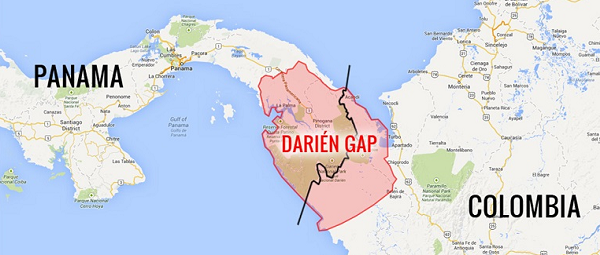Researchers develop a new technique for producing water on the moon
09/05/2024 / By Zoey Sky

Plans to explore the moon have resulted in researchers developing a unique method that produces water from hydrogen on the moon.
China and the State Corporation for Space Activities (Roscosmos), the state corporation of the Russian Federation responsible for space flights, cosmonaut programs and aerospace research, have announced plans to create the International Lunar Research Station (ILRSP).
The construction of the permanent base in the moon’s southern polar region will start its operations with the delivery of the first surface elements by 2030. Activities are expected to last until about 2040.
The ILRSP base is set to allegedly rival NASA’s Artemis Program, which will include the creation of the Lunar Gateway in orbit around the moon and the different surface elements of the Artemis Base Camp.
However, aside from the cost of building these facilities, many considerable challenges must be addressed by the space agencies involved.
For example, the crews operating on the lunar surface for long periods will require regular shipments of supplies. While the International Space Station can easily be resupplied in as little as several hours, sending resupply spacecraft to the moon will take at least three days.
Because of the longer delivery time for supplies, NASA and other space agencies are working on methods to harvest resources directly from the lunar environment through a process called In-Situ Resource Utilization (ISRU).
According to a recently published paper, a research team with the Chinese Academy of Sciences (CAS) has discovered a new method for producing massive amounts of water through a reaction between lunar regolith and endogenous hydrogen.
The research was conducted by Professor Wang Junqiang and his team at the CAS Ningbo Institute of Materials Technology and Engineering’s (NIMTE) Key Laboratory of Magnetic Materials and Devices.
The research team also included scientists from the Center of Materials Science and Optoelectronics Engineering at the University of Chinese Academy of Sciences in Beijing.
The paper is titled “Massive Water Production from Lunar Ilmenite through Reaction with Endogenous Hydrogen” and was published in the Chinese journal The Innovation.
Researchers have already confirmed that there is water on the moon
Since the time that the Apollo missions brought samples of lunar rocks and soil back to Earth for analysis, researchers have confirmed that there is abundant water on the moon.
These findings were confirmed by several robotic sample-return missions that followed, including China’s Chang’e-5 mission. But much of this water consists of hydroxyl (OH) that is formed because of the interaction of solar wind (ionized hydrogen) and elemental oxygen in the regolith.
Additionally, researchers have reported that water in the form of ice can be found in permanently shadowed regions (PSRs). PSRs include the many craters that cover the South Pole-Aitken Basin.
However, the lunar regolith contains very little hydroxyl that can be converted into water, ranging from 0.0001 percent to 0.02 percent.
The icy patches found in cratered regions are also mixed with rocky material, or regolith, forming layers that reach beneath the surface. This makes extraction more difficult regardless of where the water is coming from.
After scientists studied the samples returned by the Chang’e-5 mission, the team led by Wang found that the highest concentrations of water were contained in ilmenite (FeTiO3), a titanium-iron oxide mineral found in lunar regolith.
The researchers explained that this is because of “its unique lattice structure with sub-nanometer tunnels.”
Next, the researchers conducted several on-site heating experiments that revealed how hydrogen in lunar minerals could be used to produce water on the moon.
The findings revealed that the process consists of heating lunar regolith to temperatures exceeding 1,200 K (~930 C; 1700 F) with concave mirrors. This then resulted in the formation of iron crystals and water bubbles in the material, with the latter being released as water vapor.
The chemical process is expressed mathematically as FeO/Fe2O3 + H –> Fe + H2O.
The resulting water vapor is then reclaimed at a rate of 51 to 76 mg of water for every gram of lunar soil. That means it can produce 50 liters (13.2 gallons) of water for every ton of processed regolith, which experts suggest is enough water for at least 50 people daily.
In their paper, the research team reported that “this amount is ~10,000 times the naturally occurring hydroxyl (OH) and H2O on the moon.”
Aside from drinking water, the newly discovered process could provide the necessary irrigation water for growing crops on the moon, another important task for future lunar settlements that will help reduce their dependence on Earth.
This same process could also be used to chemically separate hydrogen and oxygen gas from regolith, which could then be turned into propellant, such as liquid hydrogen (LH2) and liquid oxygen (LOX), or used as fuel and for maintaining supplies of breathable oxygen for astronauts. (Related: Declassified documents reveal current and former senators believe the government has secretly recovered UFOs of non-human origin.)
The method could also offer another benefit because it is driven almost entirely by focused sunlight, meaning solar arrays can provide the additional power that drives the retention process.
However, there is one limiting factor to the process: It will only be possible during a lunar day in the southern polar region, which is where NASA and other space agencies all plan to build their bases. This means that the facility could run for two weeks straight followed by a two-week lull in production.
Experts suggest that this hurdle could be addressed by stationing processing facilities away from the polar regions or by creating a series of strategically placed solar mirrors or satellites that can direct light toward the southern polar region.
The water-producing method can also potentially be used to harvest water on the moon in a cost-effective way compared to heating regolith in industrial furnaces and could be paired with ice extraction and processing to guarantee that future settlements have access to plenty of water.
Visit Discoveries.news and learn about other fascinating scientific discoveries.
Watch the video below to learn about Sunita Williams and Butch Wilmore, two astronauts who could be stuck in space until 2025.
This video is from the Daily Videos channel on Brighteon.com.
More related stories:
Study: Asteroid that wiped out dinosaurs allowed flowers to grow on the planet.
NASA warns: Solar storms could cause “internet apocalypse” by 2025.
Thick water ice found buried at Mars’ equator is enough to cover entire planet in water.
Sources include:
Submit a correction >>
Tagged Under:
breakthrough, chemistry, China, clean water, cool science, cosmic, discoveries, future science, hydrogen water, ILRSP, innovations, International Lunar Research Station, inventions, moon, moon exploration, physics, real investigations, research, Roscosmos, space, space tourism, water
This article may contain statements that reflect the opinion of the author
RECENT NEWS & ARTICLES
COPYRIGHT © 2020 CommunistChina.News
All content posted on this site is protected under Free Speech. CommunistChina.News is not responsible for content written by contributing authors. The information on this site is provided for educational and entertainment purposes only. It is not intended as a substitute for professional advice of any kind. CommunistChina.News assumes no responsibility for the use or misuse of this material. All trademarks, registered trademarks and service marks mentioned on this site are the property of their respective owners.



















